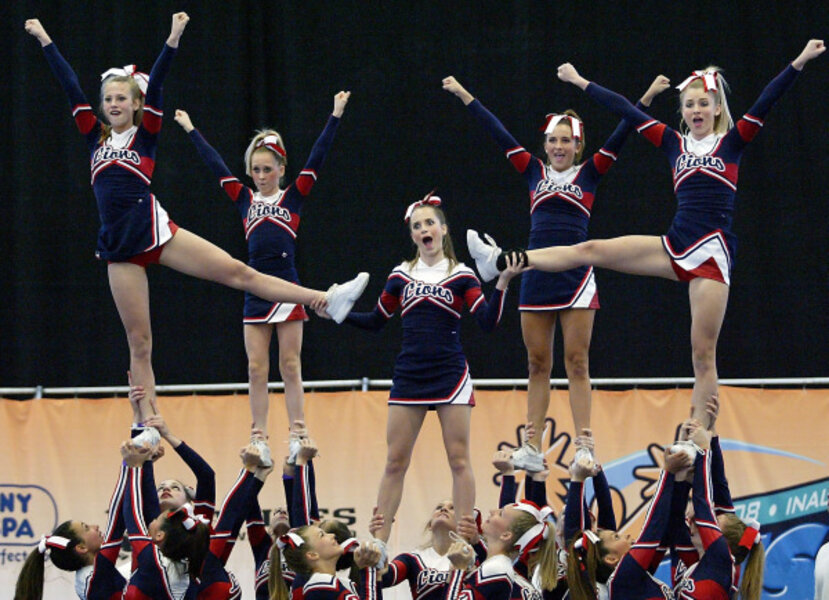Confession of a former cheerleader: It's the noncompetition that made it fun
Loading...
It was the mid-1990s. I was on a plane traveling back to my job in San Jose, Calif., and was surrounded by bouncy, bubbly, chattering young girls who all seemed to be named Ashley. They looked to be in elementary school.
One of the adults in charge told me they were heading to a cheerleading competition. At this age? I asked. Oh yes, the woman answered. “We’ve got your pee-wees, and your junior pee-wees.” Only it sounded like “pay-ways” and “junior pay-ways,” because she was from the South.
Boy, cheerleading is getting seriously competitive, I thought.
Not competitive enough to qualify as a sport, according to a federal judge this week. As a result, the judge ruled that Quinnipiac University in Hamden, Conn., could not use competitive cheering to meet federal gender-equity requirements in athletics.
Quinnipiac had wanted to cut its women’s volleyball team for budgetary reasons. It planned to replace it with a competitive cheer squad to comply with Title IX. That’s the landmark federal law from 1972 that mandates equal opportunity for men and women in athletics and academics.
A Title IX sport must involve coaches, practices, competitions, and a governing organization. Competition has to be the main goal, not just supporting other athletic teams. Quinnipiac felt it met the definition. It had recently joined with other schools to form a governing body, the National Competitive Stunts and Tumbling Association.
Judge Stefan Underhill, however, looked more universally at cheerleading – practiced by about 3.7 million youths in America. “Competitive cheer may, sometime in the future, qualify as a sport under Title IX,” he wrote. “Today, however, the activity is still too underdeveloped and disorganized to be treated as offering genuine varsity athletic participation opportunities for students.”
Back in the 1970s, when I was jumping and yelling at Walt Whitman High in Bethesda, Md., cheerleading sure felt like a sport. We practiced, had an adviser (though not a coach), and put out a lot of energy. All that aerobics kept me in great physical condition.
And like a sport, it contributed positively to my development as a young person. Facing those crowds, it turned me outward. I was a co-captain, so I learned about leadership. We had to plan ahead and work with others. And cheering, even when our team was losing, reinforced a generally positive outlook on life.
But it wasn’t a sport. We didn’t compete against other squads. Yes, you had to show some basic athletic skill (the splits, high kicks, coordination). Mostly though, we just had fun painting posters, generating school spirit, and playing in the annual “powder-puff” football game: the cheerleaders vs. the pom pons.
No way would I have tried out for the squad if I had been required to do the kind of tumbling and stunts that so many of today’s cheerleaders do, especially the ones on competitive squads. I wouldn't have wanted to put in the intense training, go to cheerleader camp, or spend all that money.
What so many of today's cheerleaders are involved in is far closer to sport, as defined by Title IX, than the cheerleading of old. That kind of activity was accessible to someone such as myself who was not particularly good at team sports and who hadn’t spent every day after school perfecting figure-eights at the community ice rink.
If not now, then someday soon, competitive cheerleading will qualify as a sport. But I hope America doesn’t lose that “underdeveloped and disorganized” activity that Judge Underhill identified. Some kids just want to have fun, and burn some energy in the process.





